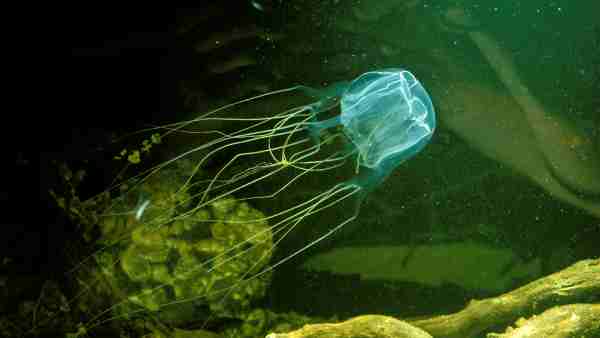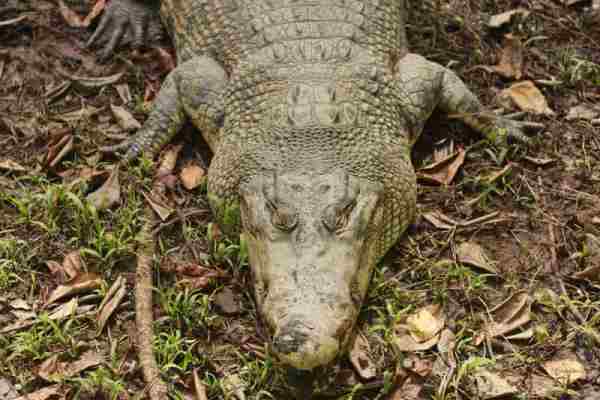Amidst the breathtaking landscapes and vibrant culture, Thailand harbors a diverse array of wildlife that can strike both awe and fear into the hearts of those who venture into its lush jungles and coastal regions. From the alluring yet venomous snakes to the enigmatic big cats that roam its forests, Thailand’s ecosystem is home to a collection of dangerous animals that command respect and caution.
The country’s lush rainforests and coastal areas house a range of species that have evolved intricate survival strategies, some of which make encounters with humans potentially perilous. While the chance of an adverse encounter remains relatively low due to the animals’ natural tendencies to avoid humans, it’s essential for locals and tourists alike to be informed and vigilant.
This article delves into the captivating but Dangerous Animals in Thailand, shedding light on the characteristics and behaviors of some of the country’s most dangerous inhabitants, and offering insights into how to coexist harmoniously with these remarkable creatures.
Table of Contents
List of Dangerous Animals in Thailand
King Cobra
Malayan Pit Viper
Green Pit Viper
Redback Spider
Asian Forest Scorpion
Box Jellyfish
Cone Snails
Stonefish
Asian Elephant
Saltwater Crocodile
Giant Asian Hornet
Bullet Ant
Brief overview of Thailand’s diverse ecosystem
Thailand’s diverse ecosystem is a captivating tapestry of natural wonders that spans from lush rainforests to stunning coastal areas. This rich biodiversity has fostered an array of unique and often elusive species, creating an enchanting environment that draws in adventurers and nature enthusiasts from around the globe.
From the towering evergreen trees of Khao Sok National Park to the vibrant coral reefs of the Andaman Sea, Thailand’s ecosystems provide a haven for an impressive variety of flora and fauna.
Importance of understanding dangerous animals for safety
Understanding dangerous animals in Thailand holds paramount importance for safety, whether for local communities or travelers. While Thailand’s wildlife is an essential part of its charm, it’s crucial to be aware of the potential risks posed by certain creatures. From venomous snakes like the Malayan pit viper to stealthy predators like leopards, having knowledge about these animals’ habits, habitats, and behaviors is the first line of defense.
This awareness empowers individuals to make informed decisions while exploring nature and helps mitigate potential conflicts, fostering coexistence between humans and the remarkable but potentially hazardous wildlife that calls Thailand home.
King Cobra:

The King Cobra, a majestic yet perilous inhabitant of Thailand’s landscapes, commands attention as the world’s longest venomous snake. This fearsome reptile can reach lengths of up to 18 feet and is characterized by its elegant appearance and distinctive hood. Residing in forests and grasslands, the King Cobra’s venom contains potent neurotoxins that can rapidly paralyze and even kill its prey.
While these cobras generally avoid human contact, encounters can happen, especially when they feel threatened. Understanding their behaviors, recognizing their habitat preferences, and respecting their space are essential for safe coexistence. Being able to identify the King Cobra can mean the difference between awe-inspiring observation and potential danger.
Malayan Pit Viper:

The Malayan Pit Viper, a master of camouflage, lurks in Thailand’s forests and plantations, its triangular-shaped head and intricate patterning often blending seamlessly with its surroundings. Its bite delivers a potent hemotoxin that can lead to severe tissue damage and other health complications.
Awareness of its presence and understanding its preferred habitats, often near water sources and undergrowth, is crucial for preventing accidental encounters. While these vipers are not usually aggressive, taking precautions like wearing protective footwear when walking in snake-prone areas can greatly reduce the risk of a dangerous interaction.
Green Pit Viper:

The Green Pit Viper, an arboreal serpent with vivid green hues, is a common inhabitant of Thailand’s forests and jungles. Despite its stunning appearance, it possesses a potentially dangerous bite that can cause pain, swelling, and even necrosis.
Recognizing its coloration and characteristic triangular head can help individuals steer clear of its path while exploring nature. These vipers are often found in low vegetation or coiled on tree branches, making a cautious approach essential to avoid inadvertent encounters.
Redback Spider:

The Redback Spider, with its distinctive black body and red stripe on the abdomen, is a venomous arachnid found in various habitats across Thailand. While encounters with these spiders are rare, their neurotoxic venom can cause discomfort, pain, and in severe cases, serious medical issues.
Identifying their unique markings and taking precautions such as wearing gloves when handling items in outdoor spaces can help minimize the risk of bites. Redback Spiders often construct their webs in sheltered areas, so being aware of your surroundings and checking before reaching into crevices can prevent unintentional contact.
Asian Forest Scorpion:

Hiding within the forests of Thailand, the Asian Forest Scorpion can be an unsettling sight for those unfamiliar with these arachnids. With their robust pincers and venomous sting, they are well-equipped to capture prey and defend themselves. While their sting is not usually lethal to humans, it can cause pain, swelling, and discomfort.
Recognizing their habitats, which include leaf litter and burrows, and refraining from disturbing potential hiding spots can help prevent unwelcome encounters. If you do come across an Asian Forest Scorpion, maintaining a safe distance and refraining from provoking it is the best course of action.
Box Jellyfish:

Floating in the warm waters of Thailand’s coastal areas, the Box Jellyfish presents a hidden danger. Its nearly transparent body and long, venomous tentacles can deliver painful stings to unsuspecting swimmers. Staying informed about their presence and adhering to warnings and guidelines at beaches can help prevent these encounters.
Protective clothing and staying vigilant while swimming in potentially infested waters are key measures to mitigate the risk of stings. In the event of a sting, seeking medical attention immediately is crucial, as some species of Box Jellyfish possess venom that can lead to serious health complications.
Cone Snails:

Thriving beneath the waves, Cone Snails are some of the ocean’s most enigmatic yet potentially hazardous creatures. These mollusks use their harpoon-like teeth to inject venom into prey, and some species can pose a threat to humans. Recognizing their intricate and colorful shells is important for avoiding accidental contact.
While encounters are rare, handling these creatures should be avoided, as their venomous stings can result in severe pain and even paralysis in extreme cases. Being cautious when exploring tide pools, coral reefs, or coastal areas where these snails might reside can help prevent unexpected stings.
Stonefish:

Camouflaged as rocks or coral, the Stonefish is a master of disguise, concealing its venomous spines in plain sight. Found in the coastal waters of Thailand, these fish can deliver excruciatingly painful stings if stepped on. Vigilance while wading or swimming in shallow waters and avoiding areas with underwater debris can help prevent these encounters.
Wearing appropriate footwear when navigating rocky or potentially hazardous areas along the coastline is essential for safeguarding against unintentional stings. If stung by a Stonefish, seeking medical attention immediately is vital, as their venom can lead to intense pain and even systemic reactions if not treated promptly.
Asian Elephant:

The Asian Elephant, an iconic and revered symbol in Thailand, is a majestic creature that commands respect. Despite their gentle demeanor, these animals are powerful and can become dangerous if they feel threatened or provoked.
Understanding their behavior and maintaining a safe distance, especially around wild elephants or those in sanctuaries, is crucial for ensuring both human safety and the well-being of these remarkable animals. While interactions with Asian Elephants can be awe-inspiring, it’s important to remember that they are wild creatures and should be treated with caution and respect.
Saltwater Crocodile:

Inhabiting the coastal areas and estuaries of Thailand, the Saltwater Crocodile is an apex predator with a reputation for its strength and aggression. These formidable reptiles can grow to impressive sizes and are capable of taking down large prey, including humans. Being aware of their preferred habitats and avoiding swimming or approaching the water’s edge in areas where crocodiles are known to inhabit is crucial for personal safety.
Following warning signs and guidelines set by local authorities when near bodies of water in crocodile territory can help prevent potentially dangerous encounters. In regions where crocodile attacks are rare, practicing caution and respect for these ancient predators contributes to coexisting harmoniously with their natural habitat.
Giant Asian Hornet:

The Giant Asian Hornet, also known as the “murder hornet,” is a large and aggressive insect that can be found in Thailand’s forests and rural areas. While not usually deadly to humans, their stings can be painful and cause allergic reactions in sensitive individuals. Recognizing their appearance and avoiding their nests is essential for minimizing the risk of stings.
Being cautious when spending time in outdoor settings and staying away from areas where hornet activity is observed can help prevent unwanted encounters. Ensuring proper hygiene when consuming food outdoors can also reduce the likelihood of attracting these insects.
Bullet Ant:

Residing in Thailand’s forests, the Bullet Ant boasts one of the world’s most painful insect stings. Despite their small size, their stings have been compared to the feeling of being shot, hence the name “bullet ant.” These ants are often found in the rainforest undergrowth and should be approached with caution.
Awareness of their presence and avoiding contact with them is essential to prevent potentially excruciating stings. Admiring these creatures from a safe distance while exploring Thailand’s natural beauty is the best way to enjoy their existence without enduring their intense sting.
Safety Precautions:
When venturing into Thailand’s diverse ecosystems, it’s paramount to prioritize safety and take appropriate precautions. Whether it’s the potential encounters with dangerous animals or navigating unfamiliar terrain, preparation is key. Stay informed about the local wildlife, their habits, and habitats. Keep a respectful distance from animals in their natural environments and avoid provoking or cornering them. When exploring forests or coastal areas, wear sturdy footwear and protective clothing to minimize the risk of bites, stings, or injuries.
Heed warning signs, guidelines, and advice from local authorities. Carry a first aid kit equipped to handle potential wildlife-related emergencies and familiarize yourself with proper procedures. Traveling in groups can enhance safety and provide support in case of unexpected situations. By being well-informed and practicing situational awareness, you can enjoy Thailand’s breathtaking natural beauty while minimizing risks to yourself and the wildlife.
Conservation and Coexistence:
As visitors and residents of Thailand, it’s crucial to promote conservation and responsible coexistence with the country’s diverse wildlife. Recognize that many of these animals play essential roles in maintaining the ecosystem’s balance. Support local efforts to protect and preserve natural habitats by choosing eco-friendly tourism activities and accommodations.
Engage in wildlife-watching experiences that prioritize ethical and non-intrusive observation. Participate in educational initiatives that raise awareness about the importance of these creatures and their environments. Conservation efforts not only safeguard the future of these species but also contribute to the overall health of the ecosystems that sustain both wildlife and humans.
Conclusion:
Thailand’s enchanting landscapes are home to a diverse array of animals, some of which can pose risks to human safety. However, with the right knowledge, precautions, and mindset, coexisting with these creatures can be harmonious. By understanding the behaviors and habitats of dangerous animals, you empower yourself to navigate their territory safely.
Prioritizing safety through protective measures and situational awareness ensures enjoyable exploration without unnecessary risks. Simultaneously, embracing conservation efforts and responsible coexistence underscores the importance of preserving these unique ecosystems for generations to come. Through a blend of respect, education, and careful consideration, both humans and wildlife can thrive in Thailand’s captivating natural environment.
Reference:
- https://coolwoodwildlifepark.com/common-dangerous-animals-in-thailand/
- https://www.chiangmaidoctor.com/dangerous-wildlife-in-chiang-mai
- https://www.phuket.net/visit-phuket/about/tips/safety/sea-safety/








